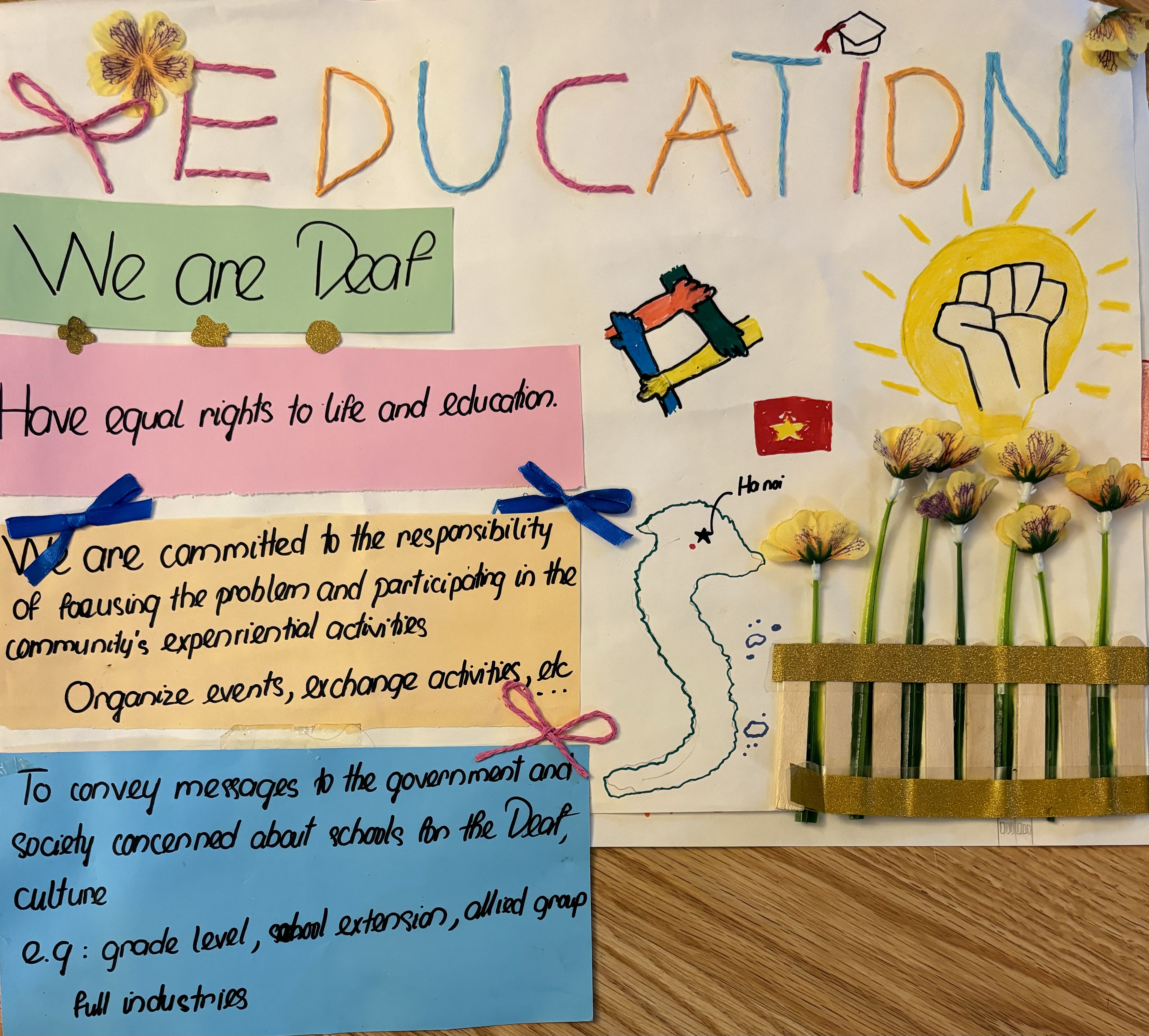Reading Mohini Mohun Majumder’s 'Muk-Shiksha' Special Education in Colonial India
Main Article Content
Keywords
Disability History, decolonial
Abstract
The paper studies a 1903 text titled Muk-Shiksha to make three arguments. It examines the colonised disabled subject with respect to networks of exchange between the colony and the metropole, the ideological reaches of oralism in the colony, and the circulation of ideas about special education through vernacular print cultures.
References
Appadurai, A. (1993). Number in the colonial imagination. In Breckenridge, C.A. & P. van der Veer (Eds), Orientalism and the Postcolonial Predicament: Perspectives on South Asia (pp. 314-339). University of Pennsylvania Press.
Banerji, J. N. (1904). Notices of Publication: Majumder, Mohini Mohan. Muk-shiksha. American Annals of the Deaf, 49, 390-391.
Banerji, J. N. (1903). Foreword. In M.M. Majumder, Muk-Shiksha (pp.vi-xii). Nibaran
Chandra Das.
Baynton, D. (1992). ‘A silent exile on this earth’: The metaphorical construction of deafness
in the nineteenth century. American Quarterly, 44(2), 216-243.
Bhattacharya, K. (1938). A statistical survey of the present educational condition of the infirm-the deaf-mutes, the blind, and the feeble-minded-in India. Calcutta University Press.
Chapman, P. (1839). Hindoo Female Education. R.B. Seeley and W. Burnside.
Date, A.H. (1935, August 3). Schools for deaf and mutes in India. The Times of India, p. 15.
Dasgupta, S.B. (1943). The deaf in foreign lands: The school for the deaf in Calcutta. The Volta Review, 45(6), 342-343.
Dutta, S. (2021). Disciplined Subjects: Schooling in Colonial Bengal. Routledge.
“Educating the blind: Indian Braille scripts.” (1923, January 5). The Times of India, p.5.
“Educating the blind: Need for a uniform system.” (1923, January 3). The Times of India, p. 14.
Grech, S. (2016). Decolonising Eurocentric disability studies: why colonialism matters in the disability and global South debate. In Soldatic, K. & S. Grech (Eds), Disability and Colonialism: (Dis)encounters and anxious intersectionalities (pp. 6-21). Routledge.
“India: Association of Workers for the Blind.” (1917). Outlook for the Blind, Spring 1917, 18.
Kampani, B.B. (1952). A pioneer worker in blind welfare. Late Dr. Nilkanthrai Dahyabhai
Chhatrapati. Report of the First All India Conference for the Blind, 133-141.
Kalpagam, U. (2001). Colonial governmentality and the public sphere in India. Journal of
Historical Sociology, 14(4), 418-440.
Majumder, M.M. (1903). Muk-Shiksha. Nibaran Chandra Das.
Majumder, N. K. (1940). Education of the deaf in Bengal. The Modern Review, 68(2), 232-
236.
Miles, M. (1997, May). Disability care & education in 19th century India: Dates, places & documentation, with some additional material on mental retardation and physical disabilities up to 1947 (revised version). ERIC. https://eric.ed.gov/?id=ED408747.
Miles, M. (2001). Including disabled children in Indian schools, 1790s–1890s: Innovations of educational approach and technique. Paedagogica Historica: International Journal of the History of Education, 37( 2), 291-315.
“Miscellaneous.” (1936). American Annals of the Deaf, 81(3), 275-276.
Nair, A. (2017). ‘They Shall See His Face’: Blindness in British India, 1850-1950. Medical
History, 61(2), 181-199.
Shah, A.K. (1942). Six Hundred Thousand. Calcutta Blind School.
Scott, D. (1999). Refashioning Futures: Criticism after Postcoloniality. Princeton University
Press.
Vasishta, M. (2021). A History of Deaf Education in India, Kindle Edition.
Banerji, J. N. (1904). Notices of Publication: Majumder, Mohini Mohan. Muk-shiksha. American Annals of the Deaf, 49, 390-391.
Banerji, J. N. (1903). Foreword. In M.M. Majumder, Muk-Shiksha (pp.vi-xii). Nibaran
Chandra Das.
Baynton, D. (1992). ‘A silent exile on this earth’: The metaphorical construction of deafness
in the nineteenth century. American Quarterly, 44(2), 216-243.
Bhattacharya, K. (1938). A statistical survey of the present educational condition of the infirm-the deaf-mutes, the blind, and the feeble-minded-in India. Calcutta University Press.
Chapman, P. (1839). Hindoo Female Education. R.B. Seeley and W. Burnside.
Date, A.H. (1935, August 3). Schools for deaf and mutes in India. The Times of India, p. 15.
Dasgupta, S.B. (1943). The deaf in foreign lands: The school for the deaf in Calcutta. The Volta Review, 45(6), 342-343.
Dutta, S. (2021). Disciplined Subjects: Schooling in Colonial Bengal. Routledge.
“Educating the blind: Indian Braille scripts.” (1923, January 5). The Times of India, p.5.
“Educating the blind: Need for a uniform system.” (1923, January 3). The Times of India, p. 14.
Grech, S. (2016). Decolonising Eurocentric disability studies: why colonialism matters in the disability and global South debate. In Soldatic, K. & S. Grech (Eds), Disability and Colonialism: (Dis)encounters and anxious intersectionalities (pp. 6-21). Routledge.
“India: Association of Workers for the Blind.” (1917). Outlook for the Blind, Spring 1917, 18.
Kampani, B.B. (1952). A pioneer worker in blind welfare. Late Dr. Nilkanthrai Dahyabhai
Chhatrapati. Report of the First All India Conference for the Blind, 133-141.
Kalpagam, U. (2001). Colonial governmentality and the public sphere in India. Journal of
Historical Sociology, 14(4), 418-440.
Majumder, M.M. (1903). Muk-Shiksha. Nibaran Chandra Das.
Majumder, N. K. (1940). Education of the deaf in Bengal. The Modern Review, 68(2), 232-
236.
Miles, M. (1997, May). Disability care & education in 19th century India: Dates, places & documentation, with some additional material on mental retardation and physical disabilities up to 1947 (revised version). ERIC. https://eric.ed.gov/?id=ED408747.
Miles, M. (2001). Including disabled children in Indian schools, 1790s–1890s: Innovations of educational approach and technique. Paedagogica Historica: International Journal of the History of Education, 37( 2), 291-315.
“Miscellaneous.” (1936). American Annals of the Deaf, 81(3), 275-276.
Nair, A. (2017). ‘They Shall See His Face’: Blindness in British India, 1850-1950. Medical
History, 61(2), 181-199.
Shah, A.K. (1942). Six Hundred Thousand. Calcutta Blind School.
Scott, D. (1999). Refashioning Futures: Criticism after Postcoloniality. Princeton University
Press.
Vasishta, M. (2021). A History of Deaf Education in India, Kindle Edition.


